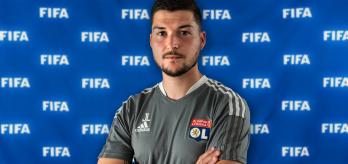Kirk explains how the matrix works and how it is used to identify and subsequently develop players in the 10 to 14 age group. Kirk reveals how players' behaviours are important, and how these are shaped, and how training sessions are designed and utilised. At these age groups, in the absence of a head coach, the coaches each take responsibility for certain areas of development, and the coaches themselves also have their own individual development matrix.
Kirk's core areas of focus include:
-
developing a talent identification matrix that has been 15 years in the making;
-
ensuring VfB's youth programme accommodates for players developing at different rates;
-
overseeing a coaching system that consists of 'pools' of coaches rather than conventional head and assistant coaches.
Watch interview
Read summary
Part 1: Working with a matrix to predict talent
Kirk explains VfB Stuttgart's talent identification matrix, which has taken around 15 years to develop. For each player, there is a snapshot of the player's qualities, which form a part of the prediction of each player's potential. The matrix helps form individual plans for future development. As players change greatly between the ages of 10 and 14, Kirk stresses a lot of the criteria are behaviour related.
Part 2: Key principles in coaching the age groups
In this section, Kirk explains the pillars of the curriculum, and how the emphasis changes through the year groups. There is a more technical focus at the beginning, but development is dictated more by the level a player is at than their age. Training is more mixed in terms of age because of this. Kirk covers character building and explains how, in training, players are constantly challenged. The art of coaching, Kirk explains, is to challenge the players, and to utilise opportunities when they arise.
Part 3: Programmes to develop players at different levels
Kirk covers the programmes in place to ensure accommodating players developing at different rates. He talks about the popular sessions of mixed age groups where coaching is based on learning needs. The games programme and coaching programme, which run concurrently, are addressed, as well as designing bespoke training. Kirk prefers this to playing in leagues, which he states are simply results oriented. Players are exposed to different game formats, different competitions, different rules and different oppositions to develop competitiveness. Kirk also outlines the setup of the training week.
Part 4: The coaching system
This section covers the various roles of the coaches. In the absence of a head coach, there is a pool of coaches with different responsibilities. Kirk explains how coaches also have their own plan, which they are responsible for developing themselves.



.variant64x64.JPG)











.variant348x164.JPG)



















